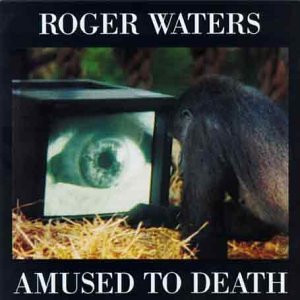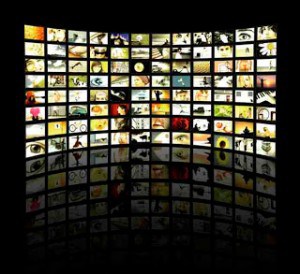 Neil Postman wrote 18 books and more than 200 magazine and newspaper articles for major publications in both the U.S. and Europe. His best known book is Amusing Ourselves to Death (1985), about mass media’s inability to share serious ideas. Television turns real, complex issues into superficial images, he argues, less about ideas and thoughts and more about entertainment.
Neil Postman wrote 18 books and more than 200 magazine and newspaper articles for major publications in both the U.S. and Europe. His best known book is Amusing Ourselves to Death (1985), about mass media’s inability to share serious ideas. Television turns real, complex issues into superficial images, he argues, less about ideas and thoughts and more about entertainment.
Postman coined the phrase media ecology in 1968 and, in 1971, founded a graduate program in media ecology at NYU’s Steinhardt School of Education.
Postman’s definition of media ecology goes like this:
Media ecology looks into the matter of how media of communication affect human perception, understanding, feeling, and value; and how our interaction with media facilitates or impedes our chances of survival. Media ecology tries to find out what roles media force us to play, how media structure what we are seeing, why media make us feel and act as we do.
 Amusing Ourselves to Death was translated into eight languages and inspired the 1992 album Amused to Death by Roger Waters.
Amusing Ourselves to Death was translated into eight languages and inspired the 1992 album Amused to Death by Roger Waters.
Popular music’s place in today’s media ecology illustrates Postman’s point. It’s more than different taste that draws us to a type of music. It is, as he says, “how it makes us feel and act as we do.”
Alternative music, on the one hand, seems to pride itself on being abstract. Generally speaking, it strives to alienate audiences, introducing obscure concepts, references. and tries to make its audience feel special, as if their experience is unique, such that no one can possibly relate to it. This sort of fan likes media that are largely unknown by the mainstream.
Country music and Hip Hop, on the other hand, occupy two completely different niches from alternative music. They own their cultures and represent them in earnest. Country generally incorporates the words, phrases and cultural references with which its audience is already intimately familiar. Songs, video and media experiences are straightforward rather than obscure.
Richard Peterson’s 1997 book, Creating Country Music, talks about “inter-textuality” – the interplay between the everyday experiences of artists, audiences and songs and how they feed back into the way genres are produced and represented. The meanings that genres embody ultimately cannot be detached from the forms of emotional investment inscribed in them through the collective act of performance and consumption, he says.
 We do not consume media. We, the audience, make up part of the media ecology. With the advent of the read/write Web, we are more integral to its creation than ever. Postman saw this coming. In his 1982 book, The Disappearance of Childhood, Postman wrote: “Children are the living messages we send to a time we will not see.”
We do not consume media. We, the audience, make up part of the media ecology. With the advent of the read/write Web, we are more integral to its creation than ever. Postman saw this coming. In his 1982 book, The Disappearance of Childhood, Postman wrote: “Children are the living messages we send to a time we will not see.”
Is meaning a choice? Is it whatever we choose to give value to? Are the values and mythology we are weaving into our own cultures, our families, our friends, our work, our play, the stories we tell, the words we use, all of these choices – is this the meaning we choose to project now and into the future?